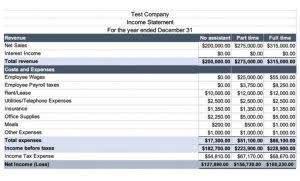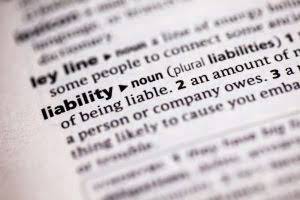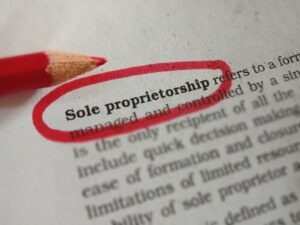While receipts were once written out by hand, today they are automatically generated at the point-of-sale. For example, the holder of a futures contract is generally given a delivery instrument, which acts as a receipt in that it can be exchanged for the underlying asset when the futures contract expires. If you sell goods that you have produced through your manufacturing division, then this would affect inventory.
Backing up receipts and organizing them for tax purposes further streamline financial management. An invoice is a legally binding document that establishes the buyer’s liability to pay the seller for the goods or services received. It provides a basis for businesses to initiate legal actions in the event of non-payment. An invoice is a request what is receipt in accounting for payment issued by a seller to a buyer, providing a detailed breakdown of products or services rendered, along with the payment terms and due dates. Its primary purpose is to indicate the amount owed by the buyer to the seller. It is important to note that regardless of the type of receipt, accuracy and completeness are essential.
- All payments are entered on the credit side under headings such as salaries and wages, printing and stationery, office expenses, and rent, rates, and taxes.
- A receipt serves as a legal and financial record, documenting the exchange of goods, services, or money between two parties.
- At Finance Strategists, we partner with financial experts to ensure the accuracy of our financial content.
- It also includes all cash and bank receipts and payments for the current year, whether they are related to current, past, or future accounting periods.
- In the digital age, electronic receipts have become increasingly common.
- Now that we have a general understanding of what a receipt is in the context of accounting, let’s explore the various types of receipts that exist and their significance in different financial scenarios.
This is especially true for people who work in industries that don’t deal with physical cash. This is because they help to establish complete and accurate record keeping. Receipts allow businesses to keep track of all their expenses and be used as necessary documentation for tax audits. A receipts and payments account only contains records of transactions related to cash and bank.
What are the Contents of a Receipt?
She has worked in multiple cities covering breaking news, politics, education, and more. Her expertise is in personal finance and investing, and real estate. A financial professional will offer guidance based on the information provided and offer a no-obligation call to better understand your situation. Receipts and payments accounts are not part of the double entry system.
Fortunately, you might not need to worry about creating a receipt as many payment tools automatically generate receipts when a customer makes a payment. Many service providers use invoices for B2B transactions, consulting services, and property management. They look similar to a bill and list the services and goods you provided.
An invoice is used when a business has completed a customer’s order and needs to collect payment for the goods or services provided. As a business owner, you would send an invoice to notify a customer that payment is due. QuickBooks’ main aim is to help small businesses grow through our special software. We’ve even created a mobile accounting app so that you can manage your finances on the go. Install our software today to make managing your business all the easier. A receipt, while also a legally recognized document, primarily serves as evidence that payment has been made.
Organizing these tasks in one place by using invoicing software can streamline your processes and give you more time to focus on your business. Businesses of all types use receipts and generally issue them for any completed payments. For example, after the customer pays the invoice issued for the garage renovation, you’ll then give them a receipt listing the payment information.
Which of these is most important for your financial advisor to have?
Receipts are entered on the debit side of the receipts and payments account. The account contains a record of receipts and payments for both capital and revenue. It also includes all cash and bank receipts and payments for the current year, whether they are related to current, past, or future accounting periods. A receipt, on the other hand, includes details such as the date of the transaction, the amount paid, the payment method, a description of the products or services purchased, and the seller’s information. Receipts act as a tangible record of the transaction, ensuring transparency and accuracy in financial records.
In terms of income, when there is constructive receipt of income, this means that taxpayers cannot pay their taxes on income or compensation that has not been spent yet. Constructive receipt doctrine applies to employees that use the cash-basis method of accounting. The doctrine of constructive receipt also stipulates that the receipt of funds by an agent is considered to be received by the principal at that time as well. A receipt serves as a legal and financial record, documenting the exchange of goods, services, or money between two parties. For businesses, receipts are an essential component of their financial records and are crucial for accurate bookkeeping and accounting. The primary purpose of a receipt is to document and verify financial transactions.
Example of a receipt
While these documents have some similarities, they’re used for different purposes. This quick guide will help answer your questions about the differences between an invoice vs. receipt so you can use them appropriately within your business. A receipt may be automatically generated by the seller (such as by a cash register). Or, under more informal or low-volume circumstances, a receipt may be produced manually by the seller. For example, an electrician can provide you with a handwritten receipt after fixing some wiring/plug outlets in your house.
The account provides classified records of different heads of receipts and payments. Lastly, it provides readily available data for preparing an income and expenditure account. A receipts and payments account is a summary of actual cash receipts and payments extracted from the cash book over a certain period. All cash received and paid during the period, whether capital or revenue, is included in this account.
Cash receipts are important to all businesses, no matter the industry. Recording cash deposits accurately helps a business track its income and expenses. It also reduces the time it takes for a business to determine how much income was collected from customers. A business is said to be in constructive receipt if the business has the ability to use the money without restriction or if it has been deposited into the business’s account.
Firm of the Future
A cash register receipt is a printed slip of paper you usually receive when making a purchase. You may recognise this type of slip from your regular grocery store purchases. This article will uncover what a receipt is and why proof of payment is necessary. You’ll also be provided with receipt examples and how to make a receipt. Learn the importance of receipts in accounting and how they contribute to managing your finances. Find out what qualifies as a receipt and how to use them effectively.
Common examples of receipts include packing slips, cash register tape, invoices, credit card statements, petty cash slips, and invoices. Although the format for these forms may vary, they all serve the same purpose of documenting the time and value of a business transaction. Companies and other entities use receipts to track their cash flows, reimburse eligible payments, or claim certain benefits on their taxes. In some countries, businesses are required to provide a receipt for each transaction. Cash receipts are the collection of money (cash) from your customers. These increase the cash balance recognized on a company’s balance sheet.
The practice of retaining receipts for tax purposes is thought to originate from ancient Egypt. Farmers and merchants sought ways to document transactions to avoid tax exploitation. In more modern times, London banks https://simple-accounting.org/ used the printing presses of the industrial revolution to print receipts with their own brands. A receipt is a written acknowledgment that something of value has been transferred from one party to another.








